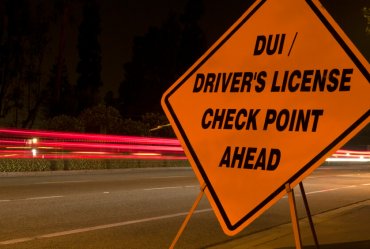You’ve probably heard the old saying – it’s not the car, it’s the driver. Well, there’s more truth to the saying than most people give it credit for. And, since, in most cases, the driver, and not his car, is at fault in an accident, truer words were never spoken. Just ask your car insurance company.
In fact, there are 5 common car accidents… and, in none of them is the car itself responsible. While you can’t possibly avoid every accident, you can be more aware of how to reduce your risk by following some simple advice for each one.
1. The Rear-Ender – This is a very common accident and occurs when one car collides into the back end of the car in front of it. You’re at fault – period. You can’t talk your way out of this one. According to the National Highway Transportation Safety Administration, rear-ender crashes make up 29% of all accidents. While following too closely is a common cause, 64% of those involved in these accidents were not looking at the road at the time of the crash. This includes talking on their cellphone, texting, adjusting the radio, extinguishing a cigarette…and, fill in the blank.
• How to avoid – Keep a safe distance from the car in front of you. Maintain a safe speed and pay attention to the road – not your cellphone. Do not text or occupy yourself with any other distraction while driving.
2. The Parked Car – If you hit a parked car, you were either not paying attention, or you need a few parking lessons. Leave a note with your name, phone number and any other pertinent information if the car you hit is unattended.
• How to avoid – When parking your car, avoid parking too close to other vehicles. If the spot says “Compact” and you drive a large pickup truck, don’t park there. If you’re parked on the street, don’t crowd the car in front of or behind you. If you had a tough time getting in, they’ll have an equally hard time getting out…and you’re leaving your car vulnerable to damage.
3. The Dreaded Hydroplane – This is usually associated with wet weather when you drive through standing water or rain covered highway. Speed is usually a culprit in unsafe conditions where the tread of the tire loses contact with the road surface when a thin layer of water gets between the two. It results in complete loss of control with the tires losing traction.
• How to avoid – During wet weather, slow down for the conditions. Regularly check your tires for worn down tread, cutting down on traction and increasing your chances of hydroplaning. If you start hydroplaning, don’t stomp the accelerator or the brakes. Take your foot off the gas and apply easy, but steady pressure to the brakes to help your car slow down enough to regain traction.
4. The Animal Collision – Wild animals don’t have a copy of the DMV manual and behave like, well…wild animals. They’re unpredictable and will make their way across a highway in spite of traffic. And, depending on the size of the animal, such as a deer or moose, colliding with one can not only severely damage your vehicle, but put your safety at great risk.
• How to avoid – Pay attention to cautionary animal crossing signs – they’re there for a reason. On dark rural or mountain roads, use your high beams and slow down to a safe speed in case one darts out unexpectedly. Be sure to be considerate of oncoming drivers by dropping to your lower beams until they have passed.
5. The Side Impact – These crashes occur when one driver fails to stop at a light or stop sign and collides with (“T-bones”) the vehicle with the right of way. Side impacts are especially dangerous because the sides absorb less energy and leave the passenger more prone to injury.
• How to avoid – Don’t take the fact you have the right of way for granted. Just because you do…doesn’t mean there isn’t some distracted guy coming your way. Maybe he’s had a few too many and fails to see the red light or stop sign at the corner. Be aware of conditions and make sure you’re not the one blowing through the red light or stop sign. Also, look into buying a car with side airbags. They’re highly effective in reducing head injuries from side impacts.
Of course, you can’t prevent all accidents from happening, but with a bit more cautious driving and focusing on prevention, you might avoid the next one – and keep your car insurance rates from going up.
Have you been involved in one of these common accidents? Feel free to share your thoughts in the comments section below.



